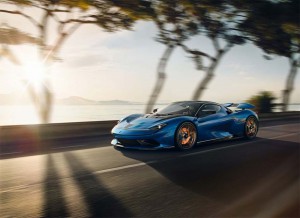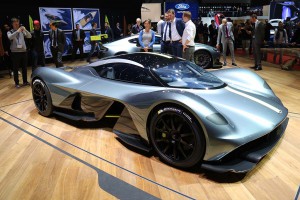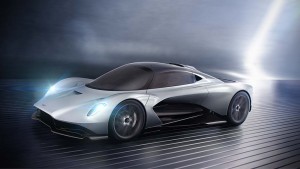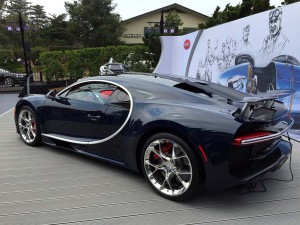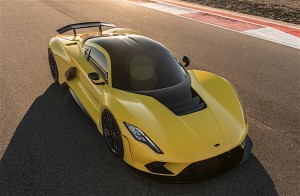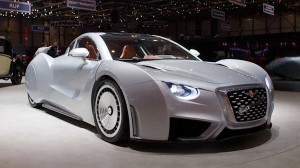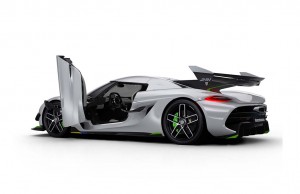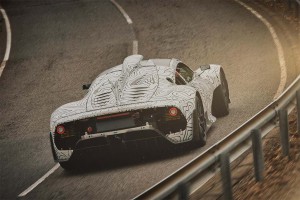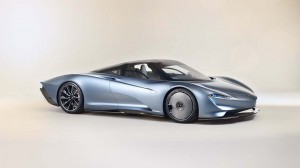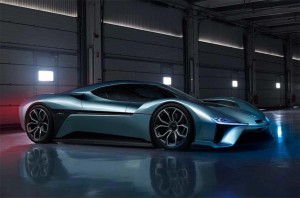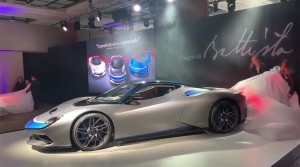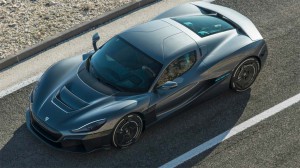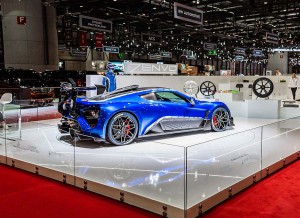This month’s Geneva Motor Show brought the debut of dozens of new models, from little city cars all the way up to mega-million dollar exotics. It also brought several new entries into one of the automotive industry’s most exotic clubs: vehicles topping 1,000 horsepower.
It’s been 14 years since the original Bugatti Veyron 16.4 captured a spot in the Guinness World Records by becoming the first model to deliver four-figure power. With the debut of models like the Aston Martin AM-RB 003, Hispano Suiza Carmen, Koenigsegg Jesko and Pinfarina Battista in Geneva last week the number of models topping the 1,000 hp mark is now over a dozen, with several other models reportedly in the works.
As you’d expect, the price tag for these products is equally astronomical. A special one-off version of the Bugatti Chiron last week was announced at $19 million. But, if you have the cash and access to a long stretch of pavement, here’s what you might want to check out:
Aston Martin Valkyrie, 1,160 hp. The British automaker is in the midst of the biggest product development program in its history and it covers some incredibly broad ground. That includes not just one but three supercars, including the Valkyrie and track focused Valkyrie Pro. The street version is a product of Aston Martin’s Formula One partnership with Red Bull Racing, though it’s more of an LMP1-style hypercar. The battery side of the drivetrain brings in yet another matter, Rimac.
Aston Martin AM-RB 003, 1,000+ hp. The AM-RB 003 picks up where the Valkyrie leaves off, “incorporate(ing) concepts and technologies taken directly from F1,” Aston tells us. We’ll have to wait a while for full specs but we expect to see the AM-RB 003 handily top 1,000 horsepower. And, for what is expected to be significantly more than $1 million, the British marque will throw in a few useful features not found on the Valkyrie, including room for some luggage.
Bugatti Chiron, 1,479 hp. The successor to the original Veyron, the first car to punch through the 1,000-hp barrier, the Chiron follows that classic mantra: “there’s no replacement for displacement,” drawing power from an 8.0-liter W-16 engine. Punch the throttle and you’ll hit 124 mph in just 6.5 seconds and peak out at just over 260 mph. The numbers are equally daunting when it comes to prices, the Chiron starting at $3 million, while a one-off this month went for an astounding $19 million.
Hennessey Venom F5, 1,600 hp. Company founder and namesake John Hennessey has a fixation on big numbers. With his latest hypercar, the Venom 5, he’s determined to not only blow past the Chiron in the horsepower race but also earn his place as the fastest car in the world. As with the Chiron, the Venom displaces a full 8.0 liters, though with half as many cylinders. You’ll have to wait until at least 2019 to be able to buy one, however.
Hispano Suiza Carmen, 1,005 hp. The name, Hispano Suiza, has special meaning to classic car fans. And now, after more than a 70-year absence, the brand has been reborn, arriving in Geneva with a fully-electric “hyperlux grand tourer” dubbed Carmen, for the granddaughter of the company founder. The retro styling recalls the Dubonnet Xenia of 1938, but the hand-crafted carbon fiber monocoque spaceframe and battery drivetrain makes it a very forward-looking option for exotic buyers.
Koenigsegg Jesko, 1,578 hp. The Swedish carmaker actually has two models in production, including the Agera RS which, in November 2017 set a production land speed record of 284.55 mph. But its newest offering, revealed in Geneva, is the Jesko which claims to be able to punch out 1,578 hp and 1,160 lb-ft of torque. Named after the father of the company’s founder, it is envisioned as more of a grand tourer, with more precise handling than the Agera.
Mercedes-AMG ONE, 1,000 ps. We’re bending the rules a bit by including the AMG ONE, Mercedes’ attempt to bring Formula 1 technology to the street. But while it might “only” make 992 horsepower, it does get into four-figure territory with a German 1,000 ps rating. This hypercar starts out with a hybridized 1.6-liter turbo V-6, that’s got a lot in common with what world champion Lewis Hamilton has been driving.
McLaren Speedtail, 1,036 hp. Long focused on Formula One racing, McLaren has today become a major player in the super and hypercar segments and now offers a variety of fast, faster and oh-my-god models, with the Speedtail giving it a seat in the 1,000 hp club. Like so many other new entries, it relies on an F1-influenced gas-electric drivetrain. There’s a hint of retro to the Speedtail in the sense that it returns to the unusual 3-seat, driver-in-the-middle layout of its original street model, the 1988 F1.
NextEV NIO EP9, 1,341 hp. You’ve almost certainly never heard of NIO. It’s a sub-brand of Chinese battery-electric carmaker NextEV, and it’s intent on making quite a splash with this gull-winged hypercar. Preliminary tests in a prototype shocked the automotive world when it lapped the Nurburgring Nordschleife in a blistering 7 minutes 5 seconds – one of the fastest times ever clocked there, and a solid record for a battery-electric vehicle.
Pininfarina Battista, 1,900 hp. The Pininfarina Battista’s four electric motors draw power from a 120 kilowatt-hour lithium-ion battery pack and produce enough to propel it to 60 in less than two seconds. The Italian design house worked with Croatian supercar maker Rimac on the powertrain which, for those who drive sensibly could yield 280 miles per charge. For those who want to push the extremes, it will be limited to 217 mph – except for a track-ready version promised to reach even higher numbers.
Rimac C-Two, 1,887 hp. A Croatian car? Rimac started out as a garage project, and while it hasn’t turned into another Apple it is making big waves in the performance sector by introducing a series of battery-powered supercars. And the Rimac Concept Two threatens to blow away every contender in Geneva, its four-motor drive system collectively delivering a full 1,914 horsepower, enough to hit 60 in just 1.85 seconds, with a top speed of 258 mph. Oh, and Rimac claims it will also manage 404 miles per charge.
Zenvo TSR-S, 1,177 hp. Denmark’s entry into the ultra-exotic world, the TSR-S is the latest in a series of limited-edition models pushing into four figures in terms of horsepower and seven figures in terms of price. The second “S” means this is the street-legal version of the track-focused Zenvo TSR that was first shown in Geneva a year ago. This is perhaps the slowest of all the 1,000+ horsepower models, with a limited top speed of 202 mph. But it still manages to hit 124 mph in just 6.8 seconds.

